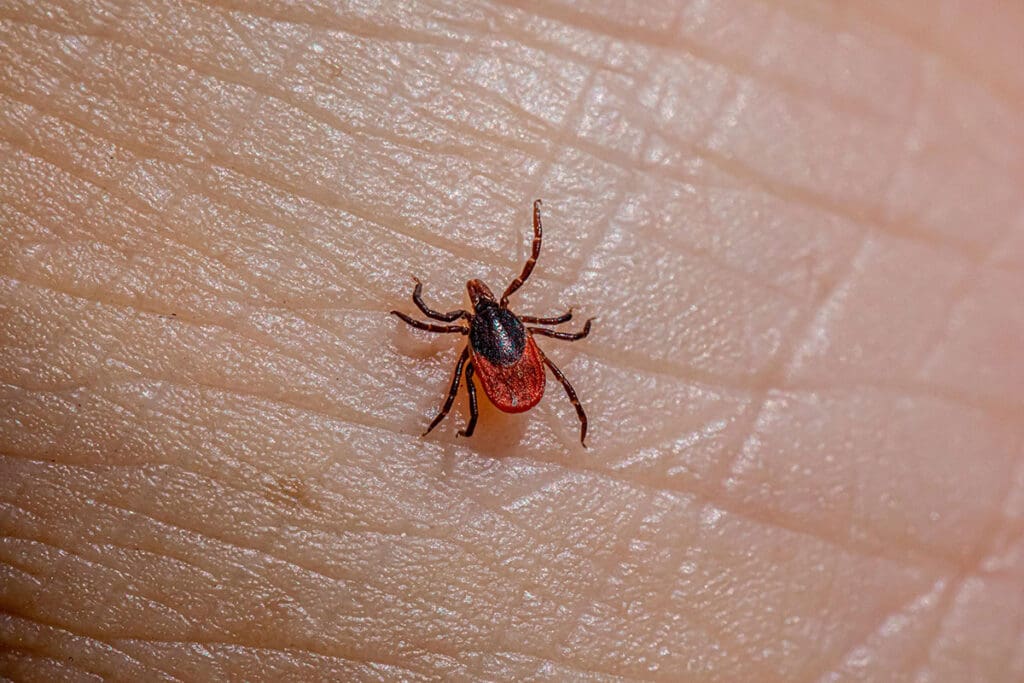
Where Lyme Disease Really Comes From & How to Recognize Its Lesser-Known Symptoms
Where does Lyme disease come from?
If you ask the average person or healthcare professional, they’ll tell you Lyme disease comes from tick bites.
And, as we touched on in our last article: Important New Findings on Lyme Disease/Chronic Lyme Disease and How it Affects You, that is not untrue.
Lyme disease often does come from tick bites. Here in the Northeast and Mid Atlanta states, the black legged tick aka “deer tick” is the main vector of the bacteria known as Borrelia burgdorferi, which causes Lyme[1].
But, what if I told you that Lyme does not always come from ticks? And that it can come from a variety of lesser-known sources.
Now, what if I also told you that the symptoms of Lyme disease are not limited to a bulls-eye rash, acute case of flu-like symptoms, high fever, and joint stiffness?
This is also true.
I know, because I help people overcome mysterious cases of Lyme disease every single day. I’ve also experienced its symptoms personally…and it took me years to figure out what was going on with my health.
So, let’s re-evaluate this fundamental question concerning Lyme and chronic Lyme disease:
Where Does Lyme Disease Really Come From?
We all know Lyme disease is spreading rapidly throughout the country, yet few of us know about its colorful (and rather sordid) history.
Much of what I’m about to share with you is not general public knowledge, but if you dig enough you will find it.
In August of 2017, the Yale School of Public Health released new findings confirming Lyme microbes have been circulating through North American forests for 60,000 years[2].
Lyme microbes were being employed by the US military in the 1950’s via ticks and mosquitoes in the development of germ warfare against the Russians[3].
Use of ticks as disease carriers for germ warfare may sound bizarre, but it has been documented throughout history through books like, “Lab 257″[4] and in a variety of research papers[5].
But it wasn’t until 1976 that the first outbreak of modern-day Lyme was recorded in Lyme, CT and the term “Lyme Disease” was coined.
It was believed then, as it is believed now, that Lyme came from infected ticks.
But, new research has surfaced linking Lyme bacteria to other vectors and sources including:
- Mosquitoes
- Fleas
- Spiders
- Bed bugs
- Head lice (my daughter contracted Lyme from lice)
Further, new research suggests Lyme can be sexually transmitted—which is a huge discovery worthy of public knowledge[6].
Finally, I have observed in my practice that, like many pathogens, Lyme can be passed down from generation to generation.
I have no formal studies or research to validate my theory (because no one is testing for it), but it does show up as such on BioEnergetic screenings.
I tell you this not to create ‘hype’ or paranoia, but in the hopes that it may help you understand how insidious and sneaky this condition can be.
So often patients come to me at a loss about how they could have contracted Lyme in the first place. Now you know why, it doesn’t just come from tick bites.
And if you did contract Lyme from a tick (as many people do), you may not have even noticed the bite; as most disease is transmitted my Nymphs (baby ticks), which are so small they are very hard to detect.
Given that most people never realize they were infected (either by a tick or otherwise) most cases of Lyme disease go untreated.
Now, if you’re lucky enough to catch Lyme in its early stages, you will likely be given antibiotics to treat it.
And this used to be an effective treatment, one that many conventional and integrative medical doctors still stand by.
However, new research has shown Lyme microbes can survive a 28-day course of antibiotics[7].
Plus, with all the newly discovered variations of the Lyme bacteria, it’s tough to target all of them with just one antibiotic.
This is a tough situation for patients and doctors, because antibiotics may or not work, and they do leave the immune system and microbiome depleted.
Which would likely be worth it (since the body’s defenses can be restored), if there were any guarantee that the antibiotic actually killed all the Lyme microbes.
Unfortunately, new research suggests there is no such guarantee—which should make you think twice before filling that prescription.
When antibiotics, or even natural therapies, don’t work or the disease goes undetected, this leads to the somewhat controversial condition known as “chronic Lyme disease”.
Many medical experts want you to believe this is not a real condition, that it’s “all in your head”, or a product of quackery.
But I’m here to tell you today, at the risk of being labeled a “quack”, that it is not only real, it is epidemic.
As I said in last week’s article, most of my patients test positive for one or more Lyme microbes.
Which means two things:
#1: That’s a whole lot of people walking around with some variation of Lyme disease. In fact I don’t really like to call it that – I usually refer to it as Lyme microbial infection. Here, Lyme is even kind of a weird word to use, but it’s relate-able. In fact it is merely a specific microbial infection or combination of infections, which many people have.
#2: And, as I mentioned earlier, the Borrelia burgdorferi bacteria isn’t the only bacteria triggering infection.
There are in fact multiple strains of Lyme microbes to contend with today; some show up in blood work and some do not.
Each of which can cause different sets of symptoms, co-infections, and ailments.
The Lesser-Known Symptoms of Lyme and Chronic Lyme Disease
Many of these symptoms have been well documented, and many of them I have learned about at conferences, through mentors, and through observation in practice.
If you’ve been experiencing any of these ailments, it’s worth considering Lyme microbes as a contributing factor:
- ADD/ADHD
- Addiction
- Anxiety
- Arthritis
- Autism
- Autoimmune disease
- Blurry vision
- Brain fog
- Cancers
- Cardiovascular disease
- Chronic fatigue syndrome
- Chronic pain
- Crohn’s disease
- Depression
- Eating disorders
- Headaches
- Immune insufficiency
- Infertility
- Insomnia
- Irritable Bowel Syndrome
- Lack of appetite
- Learning disabilities
- Multiple sclerosis
- Neurological issues
- Neuropathy
- Parkinson’s disease or tremors
- Rheumatoid arthritis in all ages
- Speech problems
- Suicidal thoughts
- Thyroid issues
- Tinnitus
- Unexplained weight-gain
- Vertigo
I would also add that “mysterious symptoms” of any kind could be an indicator. Especially if you’ve been told: “there’s nothing physically wrong with you” or “it must be all in your head”.
I can’t tell you how many times I hear this from frustrated patients…and we discover Lyme is to blame.
And infection rates on the rise. Recent research predicts that at least 12% of the US population will have Lyme disease by 2050[8]. At the ILADS conference last fall, one group of researchers projected that 35% of the world population would have a tick-born illness by 2050.
We’ve covered a lot today, so here’s a quick recap:
- Lyme disease has been in existence for over 60,000 years.
- Records confirm it was used in biological warfare experiments in the 1950s.
- The first cases of modern-day Lyme in humans were documented in the 1976 in Lyme, CT, and the disease was officially named.
- While Lyme disease is commonly spread by infected ticks, it can also be spread by other blood sucking vectors, sexual transmission, and generation to generation.
- Most tick bites go unnoticed and many cases of Lyme go undetected, which leaves people confused when symptoms arise.
- New research shows Lyme microbes can survive a 28-day course of antibiotics, which means many people who think they’ve been cured have not.
- There are multiple strains of Lyme microbes active today, many cannot be detected by existing blood work .
- Chronic Lyme disease is a real condition afflicting millions of people worldwide.
- Research predicts up to 12% of the United States population will have Lyme disease by 2050.
- Lyme can show up as a variety of confusing symptoms, ailments, acute, and chronic diseases.
- If you and/or your doctor just can’t figure out what is wrong with you, consider Lyme as a causal factor.
- And, if you are battling any of the above symptoms or diseases, do not hesitate to find a Lyme-literate doctor (like me or others) to help you.
Isn’t knowledge so very powerful?
My deepest hope is this series is empowering you to never give up on getting better! There is a reason you’re not feeling yourself, and a path to healing.
Now that you understand where Lyme really comes from and its laundry list of symptoms, the next article will go deeper into the medical and alternative testing methods available.
Including what really works, what doesn’t, what you’re even looking for in terms of microbes, where to get the right tests, and much more.
Until then I wish you love, hope and, healing,
-Dr. Joy
References:
1: https://www.cdc.gov/lyme/transmission/index.html
2: https://publichealth.yale.edu/article.aspx?id=15651
4: https://www.harpercollins.com/9780060781842/lab-257/
5: https://www.ncbi.nlm.nih.gov/books/NBK441942/
7: https://www.bayarealyme.org/blog/new-study-finds-lyme-bacteria-survive-28-day-course-antibiotics-treated-four-months-infection-tick-bite/


